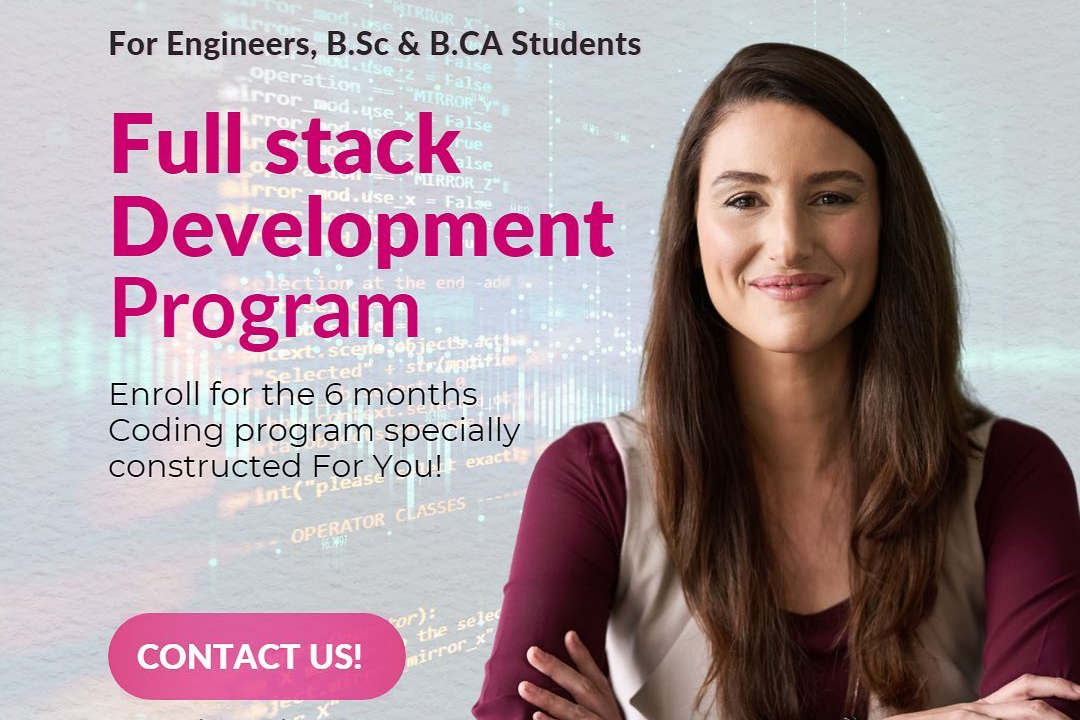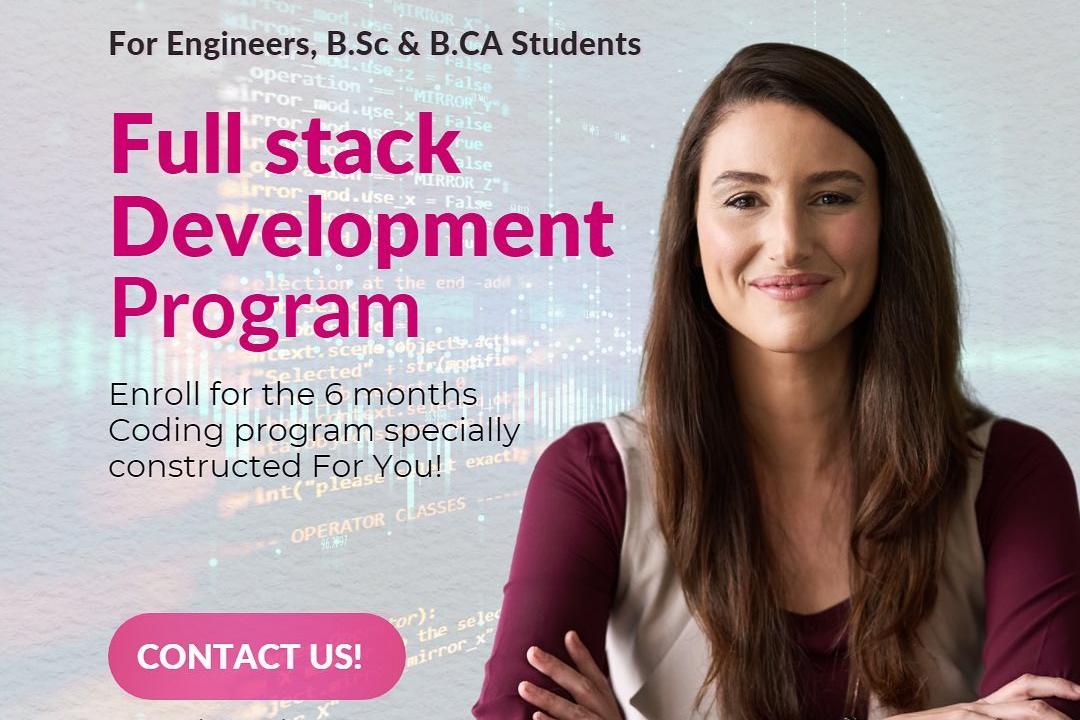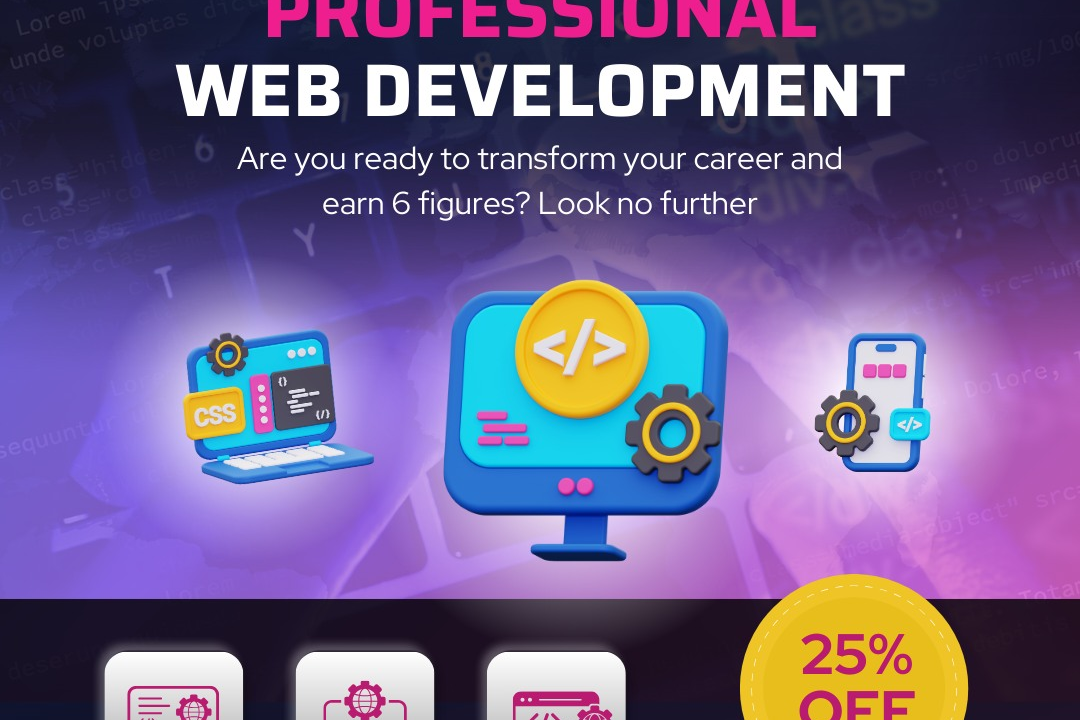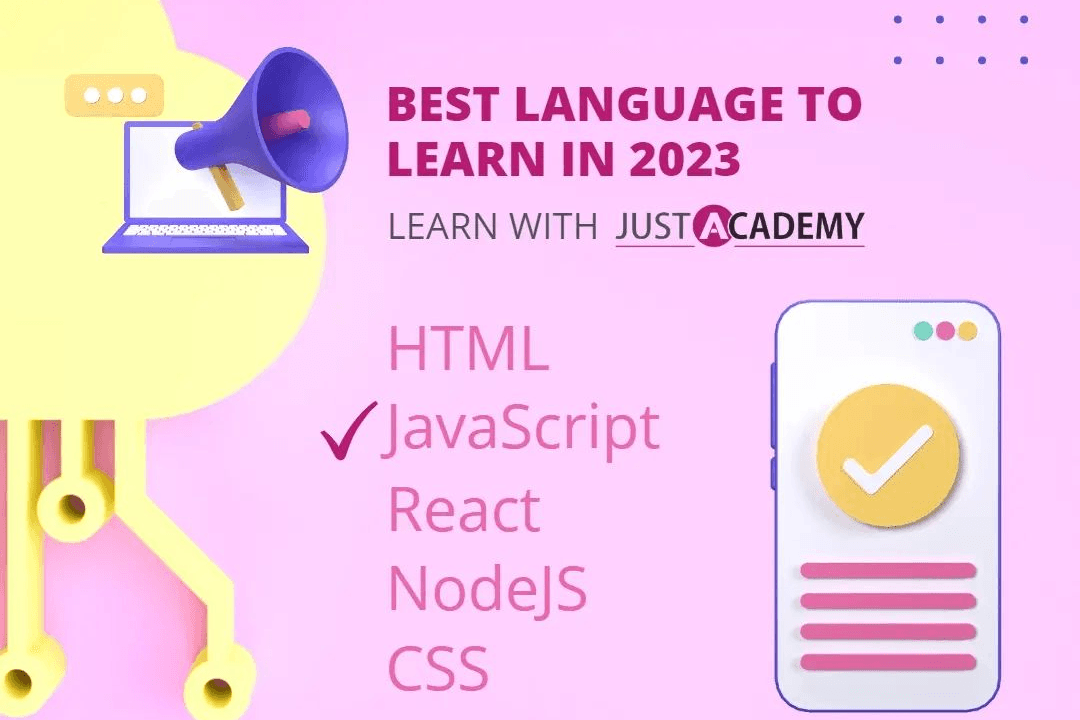Basic Knowledge of PHP for Interview
Essential PHP Concepts to Master for Your Next Interview
Basic Knowledge of PHP for Interview
PHP, or Hypertext Preprocessor, is a versatile scripting language widely used for server-side web development. Its ability to seamlessly integrate with HTML and various database systems makes it an essential tool for creating dynamic and interactive websites. Understanding PHP allows developers to manipulate data, handle form submissions, manage sessions, and create customized content, which is crucial for building modern web applications. Additionally, knowledge of PHP opens the door to leveraging popular frameworks like Laravel and Symfony, further enhancing productivity and scalability in web development projects. Proficiency in PHP is highly sought after in the job market, making it a valuable skill for aspiring developers.
To Download Our Brochure: https://www.justacademy.co/download-brochure-for-free
Message us for more information: +91 9987184296
1 - What is PHP? PHP is a server side scripting language designed for web development but also used as a general purpose programming language.
2) What does PHP stand for? PHP originally stood for “Personal Home Page,” but it now stands for “Hypertext Preprocessor.”
3) How does PHP work? PHP runs on the server, generating HTML that is sent to the client (browser). The PHP code is executed on the server before the page is delivered to the user.
4) How do you declare a variable in PHP? Variables in PHP are declared with a dollar sign followed by the variable name, e.g., `$variableName`.
5) What are associative arrays in PHP? Associative arrays are arrays that use named keys instead of numeric indices, allowing for easy data retrieval using the key value.
6) What are the different data types in PHP? PHP supports several data types, including strings, integers, floats, booleans, arrays, objects, NULL, and resources.
7) How do you include files in PHP? Files can be included using the `include`, `require`, `include_once`, or `require_once` statements.
8) What is a session in PHP? A session is a way to store information (in variables) to be used across multiple pages, enabling a persistent user experience.
9) What is the purpose of the `echo` statement? The `echo` statement is used to output text, HTML, or variables to the user.
10) How do you handle form submission in PHP? Form data can be accessed using the `$_GET` or `$_POST` superglobal arrays, depending on the form method used.
11 - What is the difference between `==` and `===` in PHP? `==` checks for equality of values, while `===` checks for equality of both value and type.
12) What are PHP functions? PHP functions are blocks of code that can be reused throughout a script, allowing for modular programming and better organization.
13) What is error handling in PHP? Error handling in PHP involves capturing and managing errors through mechanisms like `try catch` blocks and error reporting settings.
14) What is a PHP framework? A PHP framework is a platform for building PHP applications that provides a structured way to develop with built in tools and features for common tasks.
15) How do you connect to a MySQL database in PHP? You can connect to a MySQL database using the `mysqli_connect()` function or the PDO (PHP Data Objects) extension for a more flexible and secure interaction.
16) What is a PHP cookie? Cookies are small pieces of data stored on the user's computer by the web browser while browsing a website. PHP can create, read, and delete cookies using the `setcookie()` function.
17) What are the differences between `include` and `require`? The `include` statement generates a warning if the file cannot be found, but the script continues to execute. In contrast, `require` results in a fatal error, terminating the script if the file is not found.
18) How do you use PHP for file handling? PHP provides a variety of functions such as `fopen()`, `fwrite()`, `fread()`, and `fclose()` for creating, reading, writing, and closing files.
19) What are PHP superglobals? Superglobals are built in global arrays in PHP that are always accessible, regardless of scope. Common superglobals include `$_GET`, `$_POST`, `$_SESSION`, `$_COOKIE`, `$_FILES`, and `$_SERVER`.
20) What is Composer in PHP? Composer is a dependency manager for PHP that helps manage libraries and packages, allowing for easy installation, updating, and autoloading of classes.
21 - What is dependency injection in PHP? Dependency injection is a design pattern used to implement IoC (Inversion of Control), allowing a class to receive its dependencies from external sources rather than creating them internally.
22) What is a namespace in PHP? Namespaces provide a way to encapsulate items such as classes, interfaces, functions, and constants, helping to avoid name conflicts in larger applications.
23) How can you prevent SQL injection in PHP? SQL injection can be prevented by using prepared statements with bound parameters through either PDO or MySQLi, ensuring user input is properly sanitized before execution.
24) What are traits in PHP? Traits are a mechanism for code reuse in single inheritance; they allow you to include methods from one class into another, ensuring specific functionalities can be shared without a full blown inheritance hierarchy.
25) What is the purpose of the `header()` function in PHP? The `header()` function sends raw HTTP headers to the client, allowing for actions such as redirection, content type definition, and setting cache control.
26) How do you implement error logging in PHP? Error logging can be implemented by configuring the `error_log` directive in the `php.ini` file or using the `error_log()` function to send error messages to a specified log file.
27) What is the difference between POST and GET methods? The GET method appends data to the URL, allowing for bookmarkable links, while the POST method sends data in the request body, which is more secure for sensitive information.
28) What are PDO and MySQLi? PDO (PHP Data Objects) is a database access layer providing a uniform method of access to multiple databases, while MySQLi (MySQL Improved) is a specific extension for MySQL that supports various features like prepared statements.
29) What is a RESTful API in PHP? A RESTful API is an architectural style for designing networked applications that use HTTP requests to access and manipulate data in a resource oriented manner.
30) What is the use of the `isset()` function in PHP? The `isset()` function checks whether a variable is set and is not NULL, commonly used to validate form submissions and prevent errors related to undefined variables.
Course Overview
The “Basic Knowledge of PHP for Interview” course is designed to equip learners with essential PHP skills necessary for successfully navigating technical interviews in web development. This comprehensive program covers fundamental concepts such as variables, data types, control structures, functions, and error handling, along with practical techniques for form handling and database interaction using MySQL. Participants will engage in real-time projects and coding exercises that simulate interview scenarios, fostering their problem-solving abilities and readiness to tackle common PHP-related questions. By the end of the course, learners will possess a solid foundation in PHP, boosting their confidence and enhancing their employability in the competitive job market.
Course Description
The “Basic Knowledge of PHP for Interview” course is tailored for individuals seeking to strengthen their PHP programming skills for technical interviews in the web development field. This course covers essential topics, including PHP syntax, data types, control structures, functions, and error handling, while also introducing more advanced concepts like form validation and database connectivity with MySQL. Through practical exercises and real-time projects that mirror interview challenges, participants will gain hands-on experience and enhance their problem-solving abilities. By the conclusion of the course, learners will be well-prepared to face PHP-related questions confidently, making them a competitive candidate in the job market.
Key Features
1 - Comprehensive Tool Coverage: Provides hands-on training with a range of industry-standard testing tools, including Selenium, JIRA, LoadRunner, and TestRail.
2) Practical Exercises: Features real-world exercises and case studies to apply tools in various testing scenarios.
3) Interactive Learning: Includes interactive sessions with industry experts for personalized feedback and guidance.
4) Detailed Tutorials: Offers extensive tutorials and documentation on tool functionalities and best practices.
5) Advanced Techniques: Covers both fundamental and advanced techniques for using testing tools effectively.
6) Data Visualization: Integrates tools for visualizing test metrics and results, enhancing data interpretation and decision-making.
7) Tool Integration: Teaches how to integrate testing tools into the software development lifecycle for streamlined workflows.
8) Project-Based Learning: Focuses on project-based learning to build practical skills and create a portfolio of completed tasks.
9) Career Support: Provides resources and support for applying learned skills to real-world job scenarios, including resume building and interview preparation.
10) Up-to-Date Content: Ensures that course materials reflect the latest industry standards and tool updates.
Benefits of taking our course
Functional Tools
1 - PHP Development Environment
Students will set up a local development environment using tools such as XAMPP or MAMP, which provides a complete web server solution with Apache, MySQL, and PHP. This setup allows learners to code and test their PHP scripts locally without needing an internet connection. Students will gain hands on experience in configuring the environment, managing databases, and deploying scripts, thereby simulating a real world web development setup.
2) Text Editors and IDEs
The course introduces various text editors and Integrated Development Environments (IDEs) like Visual Studio Code, Sublime Text, and PhpStorm. Understanding how to utilize these tools effectively can significantly improve productivity, offering features like syntax highlighting, code completion, and debugging tools. Students will learn to customize their coding environment to enhance coding speed and accuracy, which is vital for completing projects efficiently.
3) Version Control Systems
Students will be introduced to Git as a version control system, which is essential for tracking changes in their code. Learning how to make commits, manage branches, and solve merge conflicts will empower students to work collaboratively on projects as well as manage their code history. Knowing how to effectively use Git is a transferable skill that is highly valued in the tech industry, especially when applying for development roles.
4) Database Management Tools
Familiarization with database management tools like phpMyAdmin and MySQL Workbench will be incorporated into the course. These tools provide an intuitive interface for managing databases, executing SQL queries, and visualizing database structures. Gaining experience with these tools enables students to manipulate and query data seamlessly, which is crucial for any web application development involving data storage.
5) Debugging Tools
Students will learn how to use debugging tools available in their development environment. Debugging is a critical skill for troubleshooting issues in code. This part of the training will cover how to set breakpoints, inspect variables, and track errors using tools such as Xdebug. Mastering debugging techniques allows students to identify and fix issues quickly, ensuring that their applications run smoothly and efficiently.
6) Online Resources and Communities
The course emphasizes the importance of leveraging online resources such as PHP documentation, Stack Overflow, and various PHP community forums. Students will learn how to search for solutions, interact with other developers, and contribute to discussions related to PHP development. This will encourage lifelong learning and help students stay updated with industry trends, enhancing their overall coding experience and skills.
7) PHP Frameworks Overview
Students will explore popular PHP frameworks such as Laravel, Symfony, and CodeIgniter. Understanding these frameworks and their paradigms will expose students to best practices in PHP development, such as MVC (Model View Controller) architecture. The course will include practical exercises, allowing students to build a small project using a framework, which streamlines development and promotes code reusability.
8) RESTful API Development
The course will cover how to develop RESTful APIs using PHP. Students will learn about the principles of REST architecture and how to create, read, update, and delete (CRUD) operations through API endpoints. This understanding is essential as modern web applications often rely on APIs for client server communication. Developing a RESTful API project will improve their ability to integrate front end and back end systems effectively.
9) Security Best Practices
Security is a top priority in web development. The course will cover essential security practices such as data validation, user authentication, authorization, and protection against common threats like SQL injection and Cross Site Scripting (XSS). Students will learn how to implement these security measures in their code, ensuring their projects are robust against potential vulnerabilities.
10) Unit Testing in PHP
Students will be introduced to the concept of unit testing and how to implement it in PHP using frameworks like PHPUnit. Understanding how to write tests for their code will enhance their development process by ensuring that each component works as intended. This section will highlight the importance of automated testing in maintaining code quality and preventing regressions.
11 - Deployment Strategies
The course will focus on deploying PHP applications to web servers. Students will learn about different hosting environments, using services like shared hosting, VPS, and cloud hosting. They will also explore deployment tools and best practices to ensure their applications run smoothly in production. By the end of this segment, students will have a solid understanding of the deployment lifecycle.
12) Front end Integration
Understanding front end technologies is important for full stack development. Students will get an overview of how PHP integrates with HTML, CSS, and JavaScript. This knowledge will empower them to create dynamic, engaging web applications. They will work on projects that require interfacing PHP with front end frameworks like React or Vue.js, illustrating the integration of back end and front end technologies.
13) Performance Optimization Techniques
The course will include strategies for optimizing PHP applications to improve performance. Topics will cover caching mechanisms, efficient database queries, and reducing page load times. Students will learn how to profile their applications and identify bottlenecks, ensuring that their projects deliver a smooth user experience even under heavy load.
14) Real time Project Collaboration
To reinforce learning, the course will include a collaborative project where students will work in teams to build a web application. This experience will simulate a real world development environment, fostering skills in teamwork, code review, and project management. Students will also learn about agile methodologies and how to implement them in their project workflows.
15) Adding Features with Libraries and CMS
Students will learn how to extend PHP applications with third party libraries and integrate content management systems (CMS) like WordPress. This section will teach how to utilize composer for dependency management, making it easier to incorporate libraries into projects. Understanding how to work with popular CMS platforms will prepare students for roles where PHP is commonly used in web development contexts.
These points provide a robust framework for a comprehensive PHP development course that aligns with industry standards and practices, empowering students to become proficient developers ready for real world challenges.
Browse our course links : https://www.justacademy.co/all-courses
To Join our FREE DEMO Session:
This information is sourced from JustAcademy
Contact Info:
Roshan Chaturvedi
Message us on Whatsapp: +91 9987184296
Email id: info@justacademy.co
Interview Questions For Ios Developer Fresher
unit testing iOS interview questions











